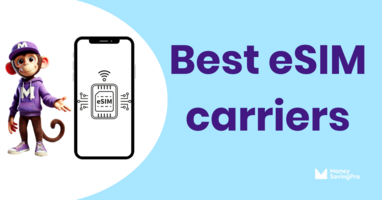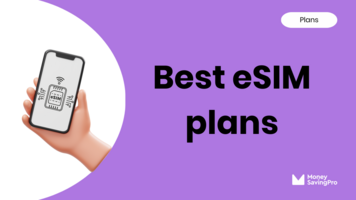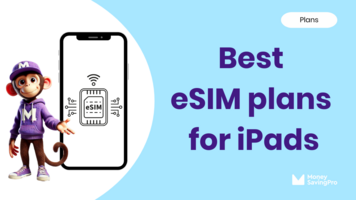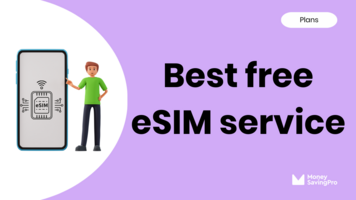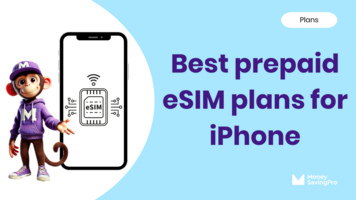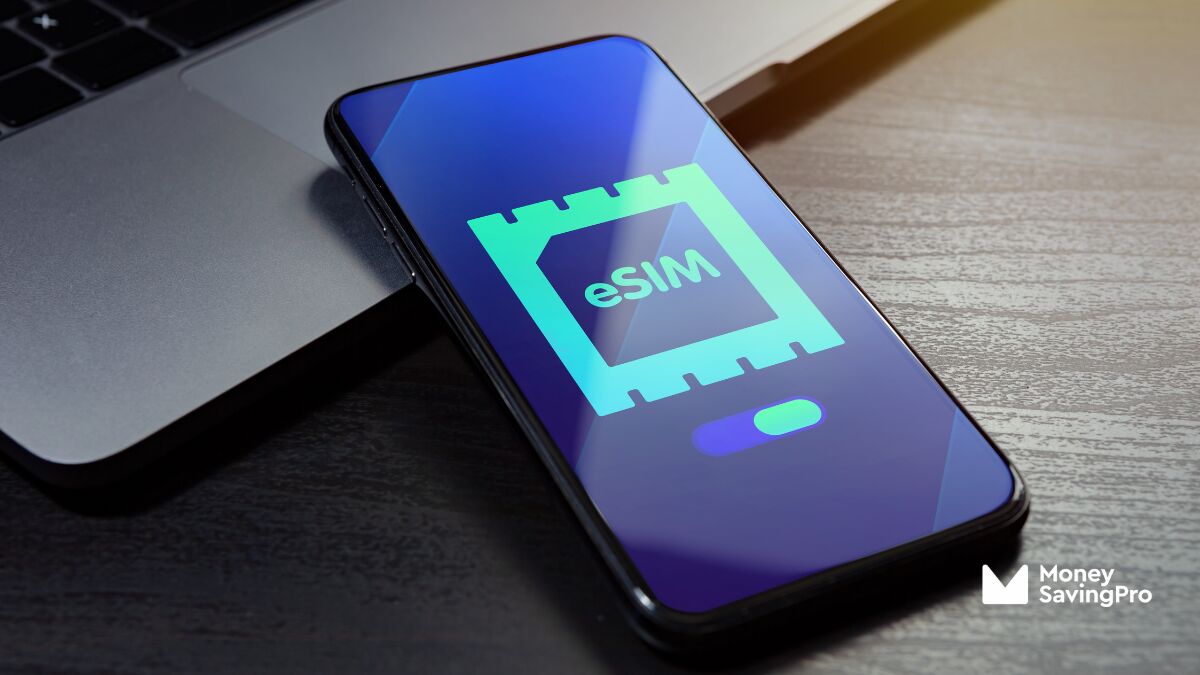
If you own an iPhone SE or you're comparing different iPhones and are wondering about the benefits of using eSIM technology, you've come to the right place!
The great news is that the iPhone SE (2nd & 3rd Gen.) does support eSIM. This gives you a leg up if you're in the market to also save a bunch on your cell phone plan.
Below, I'll cover eSIM on the iPhone SE, how to install it, and the advantages and disadvantages of eSIM plans.
eSIM on the iPhone SE
The iPhone SE supports eSIM technology, making it a fantastic choice for those exploring more flexible and cost-effective cell phone plan options.
eSIM (embedded SIM) is a digital SIM card in your device, so you no longer need a prepaid SIM card. So, if you had trouble with those tiny nano-SIM cards, this is a bonus!
With the iPhone SE, you get dual SIM card support, which includes one physical SIM slot and one eSIM. So, you can have two phone numbers with different cell phone plans and even different networks on a single device. This is ideal if you need to separate personal and business lines or if you regularly travel abroad.
The newest iPhones are dual eSIM (eSIM-only), doing away with the need for a traditional SIM altogether.
How to install eSIM on an iPhone SE
Setting up eSIM on your iPhone SE is painless:
- Contact your carrier: Reach out to your current carrier or the carrier you're interested in switching to purchase a plan. They'll give you instructions to guide you through the details of activating your eSIM.
- Scan the QR code: Once you receive the QR code from your carrier, open the Settings app on your iPhone SE, navigate to "Cellular," and then select "Add Cellular Plan." Scan the QR code, and you're connected!
- Assign a default line: After adding your eSIM, you can choose which line you want to use for phone calls, texts, and data as your default. This feature is especially handy for those with multiple work and personal lines.
Benefits of eSIM on the iPhone SE
- Flexibility: With eSIMs, you can easily switch between carriers without needing a physical SIM card. This flexibility allows you to access better mobile data deals and plans.
- Travel convenience: When traveling internationally, you can easily add a local eSIM in various countries to avoid hefty roaming charges.
- Dual lines: You can have two phone numbers on a single device, perfect for separating work and personal calls.
Disadvantages of eSIM on the iPhone SE
- Limited carrier support: Some carriers don't currently support eSIM technology, limiting your options.
- Device compatibility: Not all devices are eSIM-compatible iPhones, so if you're attached to an older model, you might miss out.
Which other iPhones support eSIM?
While the 2nd and 3rd generation of iPhone SE support eSIM, it's not the only one. Aside from the iPhone SE, several other phones in the Apple lineup support eSIM technology.
eSIM-compatible iPhone models include:
- iPhone SE 2 (2020)
- iPhone SE 3 (2022)
- iPhone XR
- iPhone XS Max
- iPhone XS
- iPhone 11
- iPhone 11 Pro
- iPhone 11 Pro Max
- iPhone 12
- iPhone 12 mini
- iPhone 12 Pro
- iPhone 12 Pro Max
- iPhone 13
- iPhone 13 mini
- iPhone 13 Pro
- iPhone 13 Pro Max
- iPhone 14
- iPhone 14 Plus
- iPhone 14 Pro
- iPhone 14 Pro Max
- iPhone 15
- iPhone 15 Plus
- iPhone 15 Pro
- iPhone 15 Pro Max
All of the above iPhones offer dual SIM support. However, the iPhone 14 and iPhone 15 series are eSIM only.
eSIM support on iPhone SE FAQs
Yes, the iPhone SE has dual SIM functionality. So you can use an eSIM and a traditional SIM card.
With the iPhone SE, you can switch between eSIM and physical SIM cards whenever you want.
eSIMs offer the same level of security as physical SIM cards, so your data remains protected.
Recap
The iPhone SE's eSIM support offers convenience and flexibility, from easily switching carriers to enjoying customizable plans that fit your lifestyle.
While there are some limitations, the benefits of eSIMs undoubtedly outweigh the drawbacks. And for those looking to optimize their monthly budget, pairing with a low-cost carrier plan can do just that.
